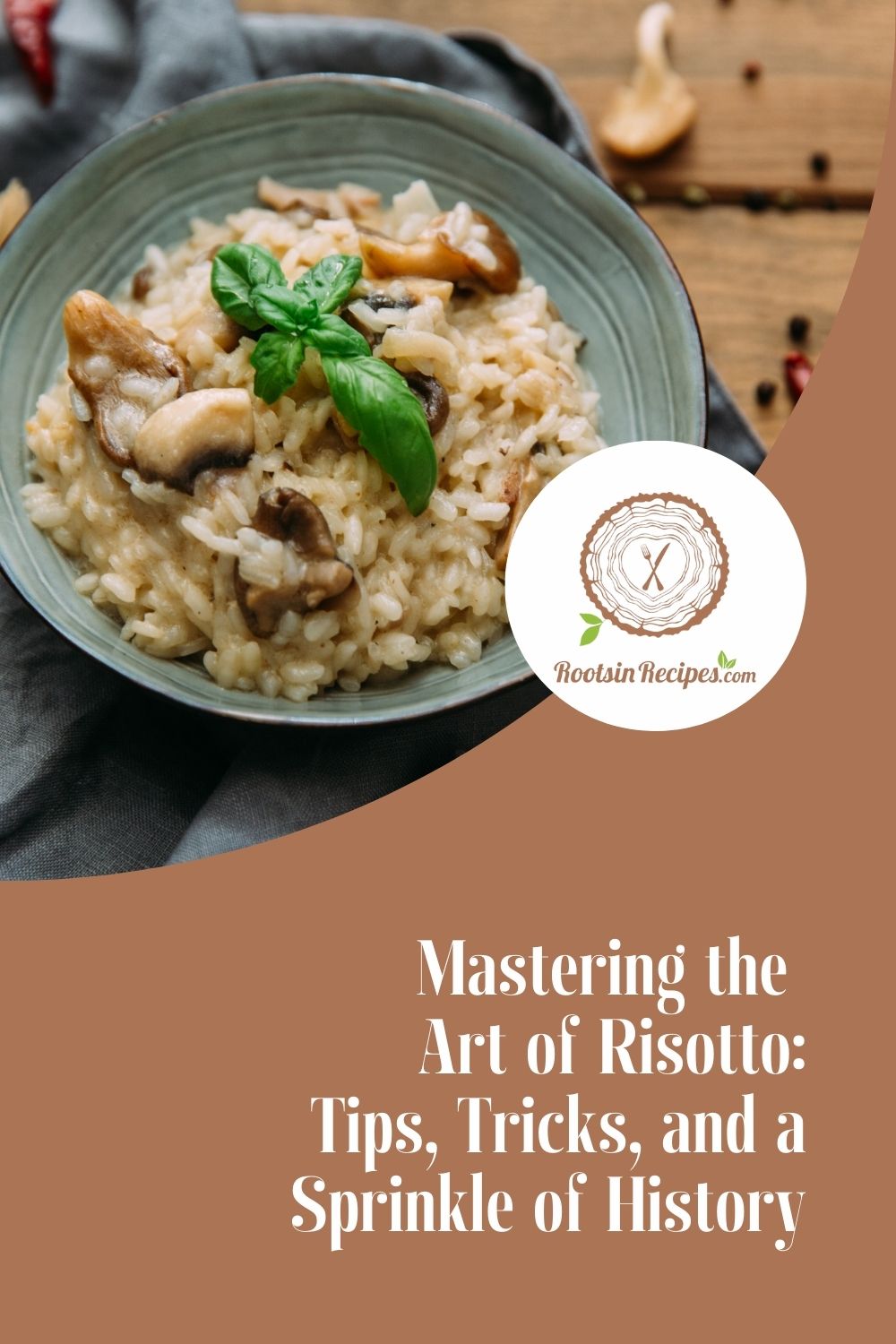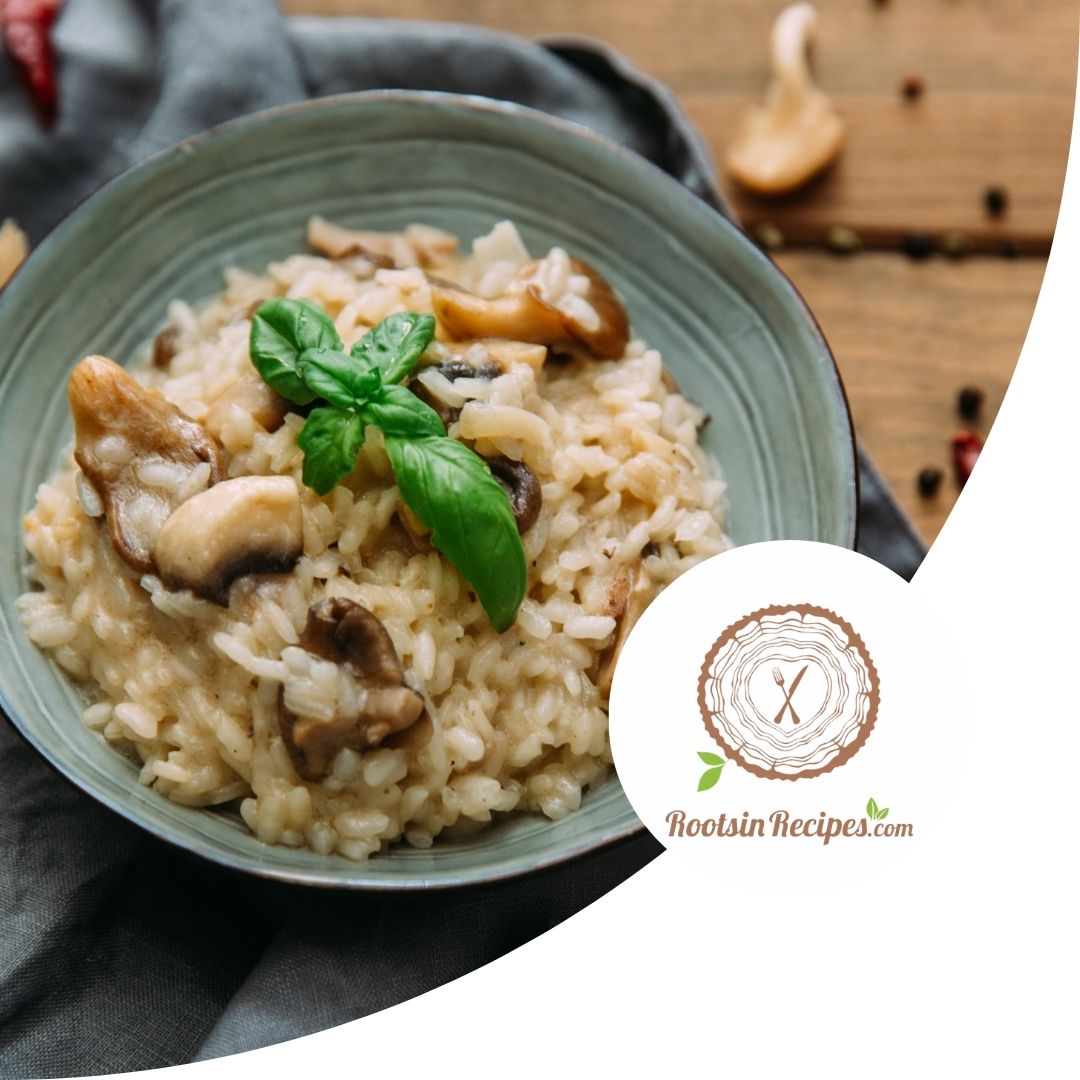
Risotto. Just the word can conjure images of a cozy Italian kitchen or a candlelit dinner with a plate of creamy, dreamy rice at the center of it all. But what is risotto, anyway?
At its core, risotto is a Northern Italian dish made by cooking starchy, short-grain rice—like Arborio, Carnaroli, or Vialone Nano—in broth until it reaches a rich, creamy consistency. Unlike boiled or steamed rice, risotto is lovingly stirred and cooked slowly, with broth added gradually, creating a texture that’s both luxurious and comforting.
For many home cooks, risotto feels like a culinary mountain—a dish that’s as intimidating as it is enticing. But here’s the secret: making great risotto isn’t just for professional chefs. With a little patience and a few techniques, it’s a dish anyone can master—and it deserves a spot in your family cookbook.
If you’ve ever considered attempting risotto but hesitated because of its reputation for being “fussy,” let me assure you: risotto is more forgiving than you think. The process of ladling hot stock, stirring gently, and watching the rice transform into a velvety masterpiece can be downright meditative. Best of all, risotto isn’t just a recipe; it’s a blank canvas. Whether you stick to tradition with a saffron-rich Risotto alla Milanese or make it your own with seasonal vegetables or seafood, it’s a dish that tells your story.
Ready to demystify risotto? In this guide, we’ll explore the dish’s fascinating history, share tips to help you make it like a pro, and even tackle the question: is Rice-A-Roni really the Americanized version of risotto? Stick around, and you’ll soon be stirring up your own masterpiece—one that might just become a tradition in your home for generations to come.

A Rich History of Risotto and Its Journey Beyond Italy
The story of risotto begins in the lush Po Valley of Northern Italy, where the introduction of rice by Arab traders in the 14th century met fertile soil and abundant water. By the Renaissance, rice cultivation thrived in Lombardy and Piedmont, and risotto began taking its recognizable form.
For many Italian families, risotto recipes are more than a set of instructions—they’re a legacy. Passed from nonnas to their children and grandchildren, these recipes often reflect regional flavors and familial quirks. In Veneto, families may prepare Risotto al Nero di Seppia, dyed black with squid ink, while in Milan, the luxurious saffron-laden Risotto alla Milanese reigns supreme. Cooking risotto becomes a communal activity, with generations gathering around the stovetop to toast rice, ladle broth, and share stories.
As Italian immigrants brought their cuisine abroad, risotto found a place on the global stage. Chefs around the world, inspired by its simplicity and versatility, began to adapt risotto to local tastes and ingredients. Modern chefs like Massimo Bottura have elevated it into haute cuisine, while home cooks everywhere continue to embrace it as a dish that combines comfort and sophistication.
Is Rice-A-Roni the Americanized Risotto?
Rice-A-Roni, often called "The San Francisco Treat," has sparked debate among food enthusiasts: Is it the American version of risotto? While both dishes share a foundation of rice cooked with flavor-enhancing additions, their differences highlight unique culinary identities.
- Similarities: Like risotto, Rice-A-Roni involves toasting rice in fat and cooking it in a flavored liquid to achieve a tender texture. Both are versatile and customizable, making them household staples.
- Differences: The key distinction lies in technique and ingredients. Risotto requires slow, gradual cooking with the constant addition of broth, creating a creamy consistency from the rice’s starch. Rice-A-Roni incorporates vermicelli pasta, cooks more quickly, and often relies on pre-seasoned packets for flavor rather than fresh stock or finely balanced ingredients.
So, while Rice-A-Roni may echo risotto's essence, it simplifies and streamlines the process, reflecting the fast-paced convenience of American cooking. Risotto, on the other hand, remains a labor of love that celebrates the art of slow cooking.
What do you think? Is Rice-A-Roni a distant cousin of risotto, or are they more like culinary neighbors sharing a border but speaking different languages?
Tips and Tricks for Perfect Risotto Every Time
Here’s a detailed breakdown of each step to help a novice home chef confidently make risotto:
- Choose the Right Rice
Why It Matters: Not all rice is created equal when it comes to risotto. Arborio, Carnaroli, and Vialone Nano are short-grain varieties with high starch content, which is what gives risotto its creamy texture.
Pro Tip: Arborio is the most widely available and beginner-friendly, but Carnaroli is known as the “king of risotto rice” for its ability to stay firm while still releasing starch. If possible, pick a high-quality brand for the best results. - Toast the Rice
What to Do: Heat a pan with a bit of olive oil or butter, then add the dry rice. Stir constantly for about 1–2 minutes until the grains are lightly toasted and aromatic.
Why It Matters: Toasting the rice gives it a subtle nutty flavor and creates a protective layer on the grains, which helps them cook evenly and prevents them from becoming mushy.
Pro Tip: Avoid browning the rice—it should be lightly golden, not burnt. - Keep the Stock Warm
What to Do: Heat your stock in a separate saucepan and keep it at a simmer throughout the cooking process.
Why It Matters: Adding cold stock to hot rice will lower the temperature in the pan, slowing down the cooking process and affecting the creamy consistency.
Pro Tip: Use homemade or high-quality store-bought stock (chicken, vegetable, or seafood) for the best flavor. If you run out, add hot water as a last resort. - Stir Intelligently
What to Do: Add the warm stock one ladleful at a time, stirring gently as the rice absorbs the liquid. Repeat this process until the rice is fully cooked but still slightly al dente (firm to the bite).
Why It Matters: Stirring releases starch from the rice, creating that creamy texture risotto is famous for. However, over-stirring can break the grains, making the dish gummy.
Pro Tip: Stir in a figure-eight motion to distribute the heat and liquid evenly. Use a wooden spoon or silicone spatula for better control. - Season Gradually
What to Do: Add salt and other seasonings (like pepper or herbs) in small increments as you go, tasting frequently.
Why It Matters: Layering seasoning throughout the cooking process builds depth and ensures you don’t accidentally over-salt the dish.
Pro Tip: Be mindful of how salty your stock and any added ingredients (like cheese) are. It’s easier to add salt than to fix an over-salted dish. - Finish Strong
What to Do: Once the rice is cooked, turn off the heat and stir in a knob of cold butter and a generous handful of grated Parmesan cheese. This process is called mantecatura in Italian.
Why It Matters: The butter and Parmesan melt into the risotto, enriching its flavor and giving it a luxurious, silky finish.
Pro Tip: Serve the risotto immediately—it waits for no one! If left to sit, the texture will change as it cools. - Final Thoughts for Success
Timing: The entire process should take about 20–25 minutes. Set aside uninterrupted time to focus on stirring, tasting, and enjoying the process.
Consistency Check: The final risotto should spread slightly on the plate but not be runny. If it’s too thick, add a splash of stock at the end to loosen it.
With these detailed steps, even a novice home chef can approach risotto with confidence and create a dish that looks and tastes restaurant-worthy. Would you like help creating a specific risotto recipe for your cookbook?
Risotto: A Global Symbol of Comfort and Creativity
Whether it’s a treasured family recipe or a daring culinary experiment, risotto continues to evolve while maintaining its roots in tradition. As it moves beyond Italy, it connects people through shared experiences of nourishment, care, and creativity.
So the next time you’re ladling broth into rice, think about the generations who stirred that same pot and the endless possibilities for making it your own. And as you savor your creation, consider the legacy you’re leaving in your kitchen—because food is more than sustenance; it’s a story.